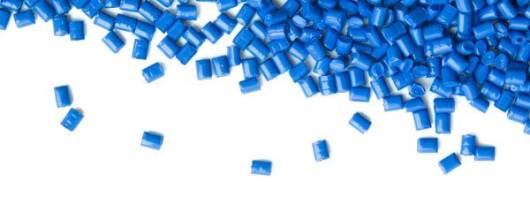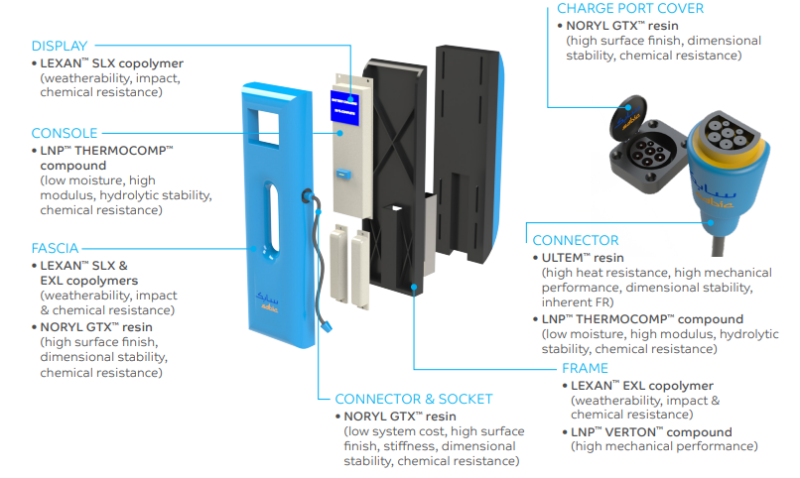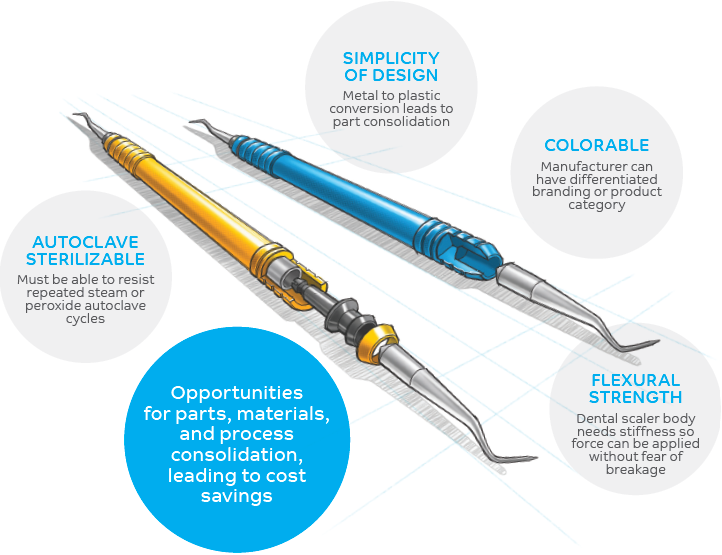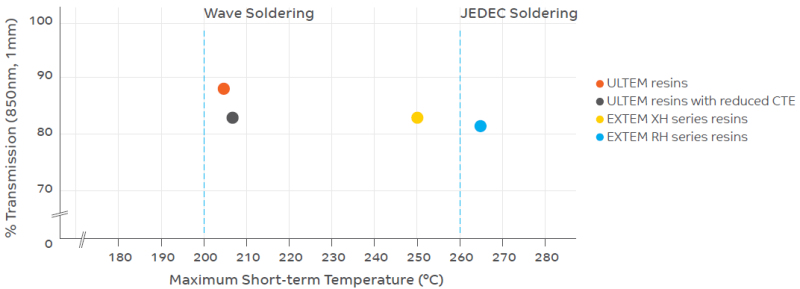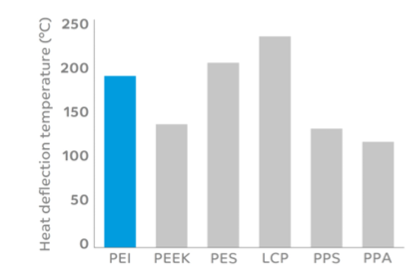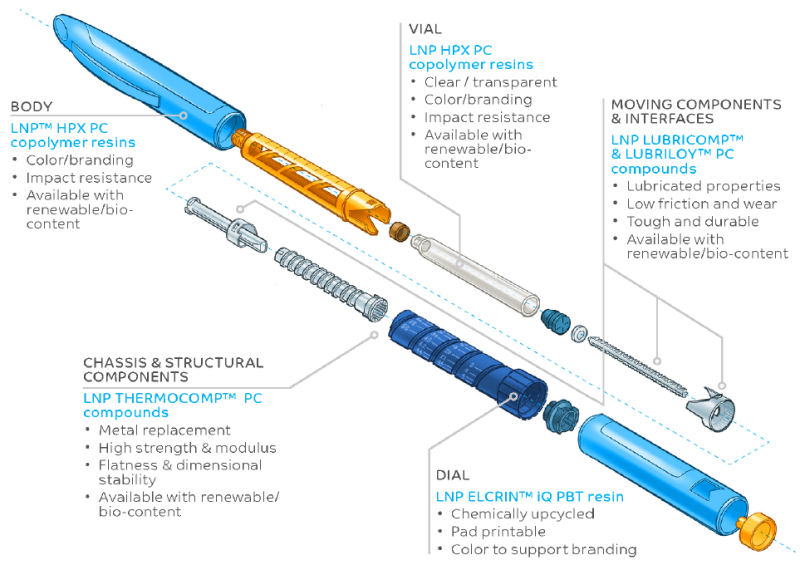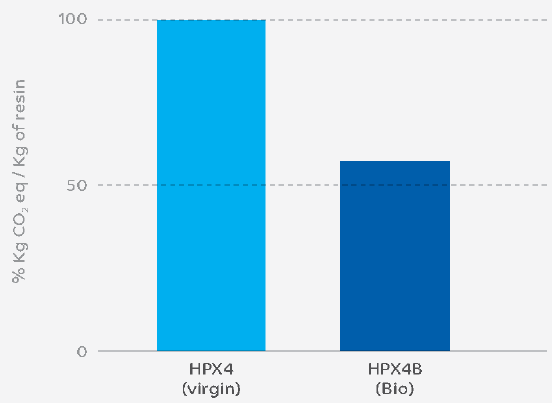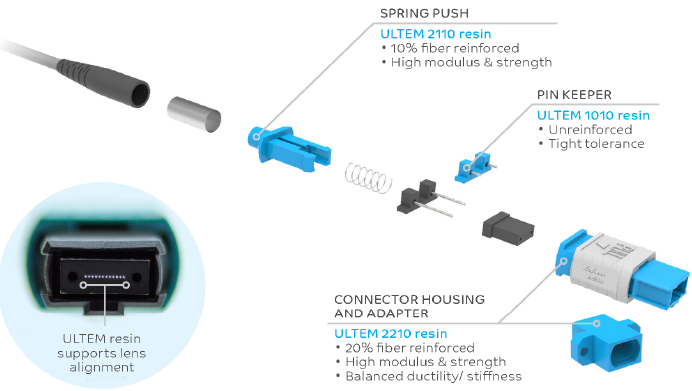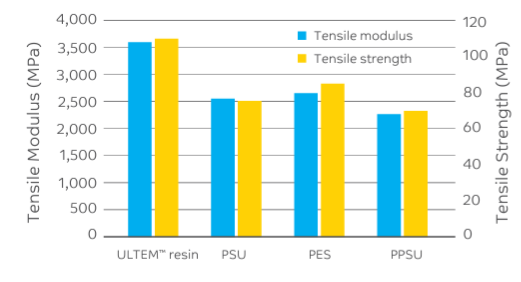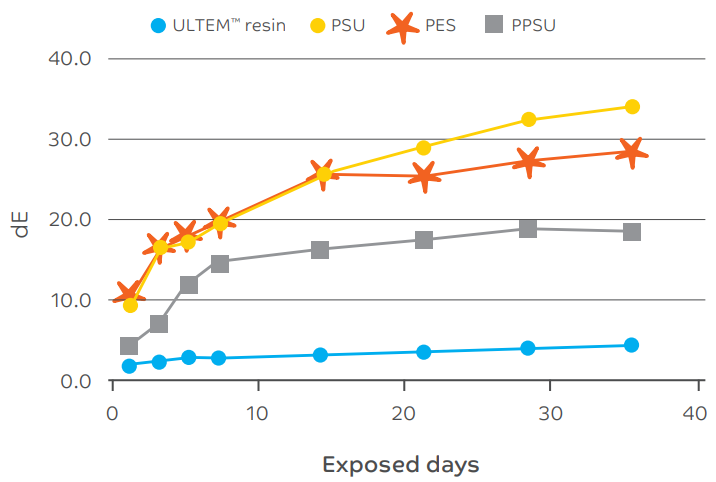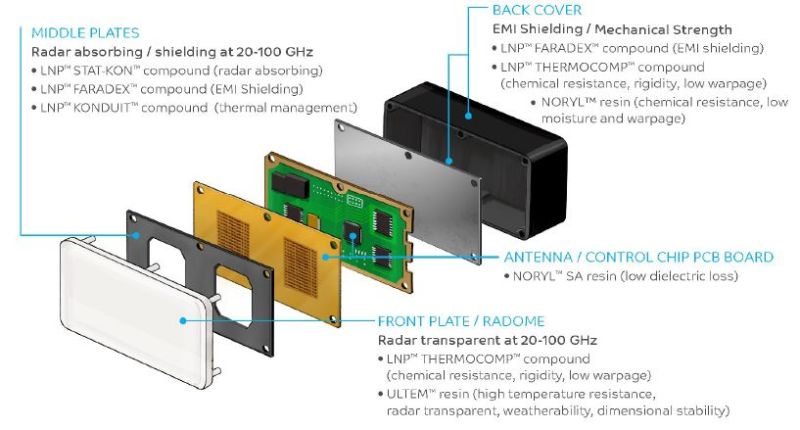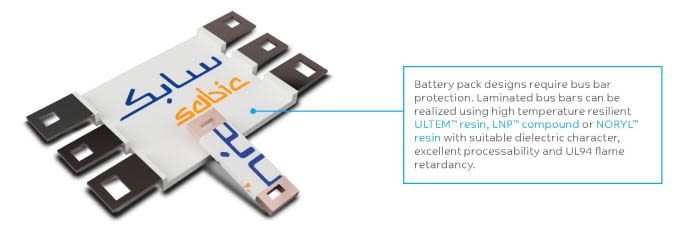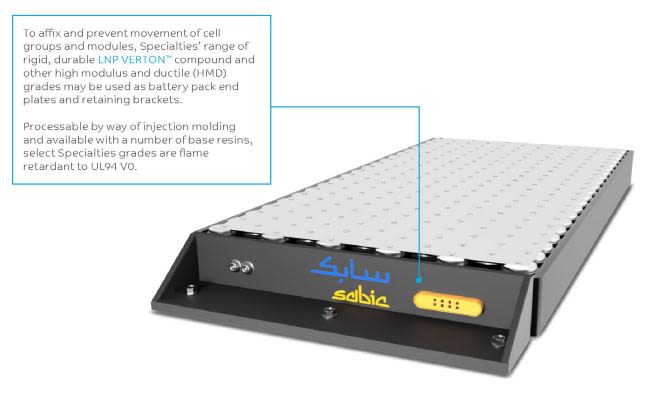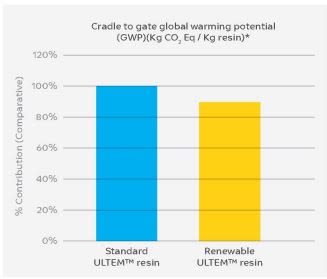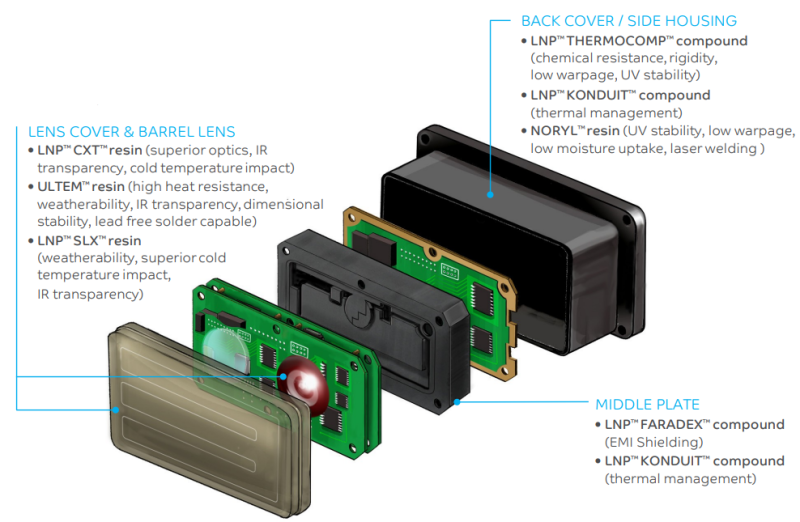The Key Five Things to Consider
- Follow recommended drying conditions before processing high heat resins.
- Resins are shear sensitive
- High temperature materials require high process temperatures.
- Tooling & part design are important for a successful trial.
- Processing & application testing requires attention to details!
Injection Molding
Injection molding machine must have.
- Adequate plastic injection pressure
138 MPa Minimum (207 MPa preferred)
- High temperature capability - 425°C (800°F)
- Barrel Utilization
Target 30-80% (Residence time between 2 and 5 minutes ideally)
- Precise nozzle temperature control
High watt density bands preferred
3-5 tons/in2 projected area
2.0 to 2.3:1 Compression Ratio (GP design works with 2.5:1)
Temperature Control
- Able to uniformly heat molding surfaces to 150-200C (300-392F) depends on resin grade.
Drying, resin dryer must have
- Dew point monitoring, -40°C dew point capable
- High temperature package
175°C (350°F) capability for EXTEM with after cooler on return air
- Equipped with spreader cone and resin level completely covers cone
- Resin transport hoses must be:
High temperature & free of contaminants
Ideally short in length.
Mold Considerations
- Generous gating – Bigger is better!
- Complete a mold filling analysis if possible
- Adequate mold venting
- Cooling circuits on cavity/ core inserts and retainer plates
- Insulation board on top clamp plate (at a minimum) Top & Bottom preferred
Troubleshooting
Discoloration
- The appearance of a non-uniform color distribution in the molding
- Purge heating cylinder
- Lower melt temperature by:
- Decrease cylinder temperature
- Decrease screw speed
- Decrease back pressure
- Lower nozzle temperature
- Shorten overall cycle
- Increase back pressure to improve melt homogeneity
- Check hopper and feed zones for contaminants
- Check for proper cooling of ram and feed zone
- Provide additional vents in mold
- Move mold to a smaller shot size press to reduce barrel residence time.
- Check screw design, a high compression ratio screw may cause excessive shear heating.
Black Specks
Small black areas (spots) inside the material, mostly present in transparent ULTEM™ / EXTEM™ grades.
- Purge with ULTEM/EXTEM regrind or un-dried ULTEM/EXTEM resin
- Purge periodically after shut-off until cylinder temperature falls below 660°F (350°C); then continue with purging until shutdown is complete.
- Bank set temperatures of machine at 350°F (180°C) when not molding (EXTEM @ 400°F (204°C)
- Decrease nozzle temperature
- Check temperature at feed section, low temperatures may cause mechanical degradation.
- Check heater bands and control
- Check nozzle tip, check ring assembly, nozzle adapter, and end-cap for hang-up areas
Burn Marks
They are usually caused by overheating of the material due to entrapped air (diesel effect): this causes the darkening in color
- Decrease injection speed
- Decrease booster time
- Decrease injection pressure
- Check venting channels for dirt
- Use programmed injection
- Improve venting of tool Alter position of gate and/or increase gate size
Brittleness / Cracking
The molded product is failing prematurely either after molding, during testing, or during normal usage.
- Dry resin properly (<0.02% moisture content)
- Improve weld line strength (see weld lines)
- Decrease molded in stresses (see stresses)
- Lower melt temperature by:
- Decrease cylinder temperatures
- Decrease screw speed
- Decrease back pressure
- Check for voids in the part
- Check for contamination
- Decrease the amount of regrind in feed
- Check part design (sharp corners, wall thickness transitions, bosses etc,..)
- Check tooling (venting, ejection system)
- Investigate for chemical attack.
Gloss
- Increase mold temperature
- Increase melt temperature
- Increase injection speed
- Increase injection pressure
- Check surface of the mold for polish
- Clean vents
- Increase venting
Weld Lines / Knit Lines
These lines occur where two melt flow fronts in the mold meet. The streams of plastic should be hot enough to fuse adequately. Weld lines are not just surface marks, but can be points of weakness: notches, stress raisers.
- Increase injection speed
- Increase injection pressure
- Increase injection hold time
- Raise the mold temperature
- Raise melt temperature by increasing cylinder temperatures
- Vent the cavity in the weld area
- Provide an overflow well next to the weld area
- Change gate location to alter flow pattern
Jetting / Worming
A serpentine line on the part surface emanating from the gate
- Decrease injection speed
- Increase melt temperature by:
- Increase cylinder temperature
- Increase screw speed (unfilled)
- Increase back pressure (unfilled)
- Increase mold temperature
- Increase gate size
- Decrease gate land length
- Modify gate location or angle: directly into wall or pin
- Avoid gating at thick section.
Voids
Vacuole hollows in the molding, due to thermal shrinkage that draws material away from the fluid core of a part.
- Decrease injection speed
- Increase holding time
- Reduce melt temperature
- Increase mold temperature
- Check gate size and reduce gate land length
- Increase gate size and reduce gate land length
- Increase nozzle size and/or runner system
- Redesign part to obtain equal wall sections.
Molded in Stress
These molded in stresses can result in part brittleness. Usually caused by highly oriented polymer flow.
- Decrease injection speed
- Increase melt temperature
- Increase mold temperature
- Decrease injection pressure
- Increase gate size
- Increase nozzle orifice diameter
Sink Marks
Visible defects resulting from insufficient cooling before removal from the mold. A heavy rib intersecting a thin wall may show up as sink marks: these are very difficult to eliminate by varying processing conditions.
- Increase injection hold time
- Increase injection pressure
- Reduce melt temperature
- Reduce mold temperature
- Decrease injection speed
- Enlarge and/or add vents to mold parting line
- Increase size of sprue and /or runners
- Increase gate size and reduce gate land length
- Relocate gate next to heavy or thicker areas
- Core out heavy wall sections where possible
Sticking In Sprue Bushing
At end of cycle, the sprue does not release from the mold but sticks in the sprue bushing.
- Decrease injection pressure
- Increase injection hold time
- Decrease booster time
- Increase mold close time
- Decrease mold temperature at sprue bushing
- Leave nozzle against mold: no pull back
- Raise nozzle temperature
- Check for correct seat between nozzle and sprue
- Check sizes and alignment of holes in nozzle and sprue bushing
- Nozzle orifice should be .030” smaller in diameter than sprue bushing “O” diameter
- Check polishing of sprue
- Provide more effective sprue puller
- Make sure sprue has enough draft angle for easy release
- If the sprue is stringing, increase or add screw decompression
Sticking In Cavity / Core
At the end of cycle, the part does not release from the mold but sticks on the core or cavity.
- Decrease injection pressure
- Decrease hold time
- Decrease booster time
- Adjust feed for constant cushion
- Increase mold closed time
- Adjust the cavity/core temperatures to a 20° differential between mold halves
- Decrease cylinder and nozzle temperature
- Check mold for undercuts and /or sufficient draft.
Streaks
- Decrease melt temperature
- Decrease nozzle temperature
- Decrease back pressure
- Decrease injection speed
- Decrease screw speed
- Decrease cushion size
- Check for contamination
- Increase the cavity venting
- Increase gate size
- Increase nozzle orifice diameter
- Check for material hang-up
Warpage, Part Distortion
- A dimensional distortion in the molded part, usually bowing or bending of the part.
- Equalize temperature of both mold halves
- Observe mold for uniform part ejection
- Check handling of parts after ejection from mold
- Increase injection hold time until gate freezes
- Increase mold closed time
- Increase or reduce injection pressure
- Increase or reduce mold temperature
- Set differential mold temperatures to counteract warpage due to part geometry
- Use shrink fixtures and jigs for uniform cooling of the part
- Check gate locations and total number of gates to reduce orientation
- Increase gate dimensions
- Redesign part to equalize wall variation in molded part-thick and thin walls in the same part create differential shrinkage stresses
- Check cooling line layout, unbalanced cooling promotes warpage.
Splay Marks, Silver Streaks
The result of:
- Moisture on the pellets which should be removed under recommended drying times & temperatures
- Products of degradation due to overheating.
- Residual non-aqueous volatiles in material.
- Dry resin properly excess moisture may cause splay
- Lower melt temperature by:
- Decrease cylinder temperatures
- Decrease screw speed
- Decrease back pressure
- Lower nozzle temperature
- Decrease injection speed
- Shorten or eliminate screw decompression
- Shorten overall cycle
- Increase or decrease mold temperature
- Check for contamination (e.g.water or oil leaking into mold cavity)
- Move mold to a smaller shot size press
- Check for drooling
- Open gates
- Check hot runner system
- Increase nozzle orifice
- Increase sprue and runner size


